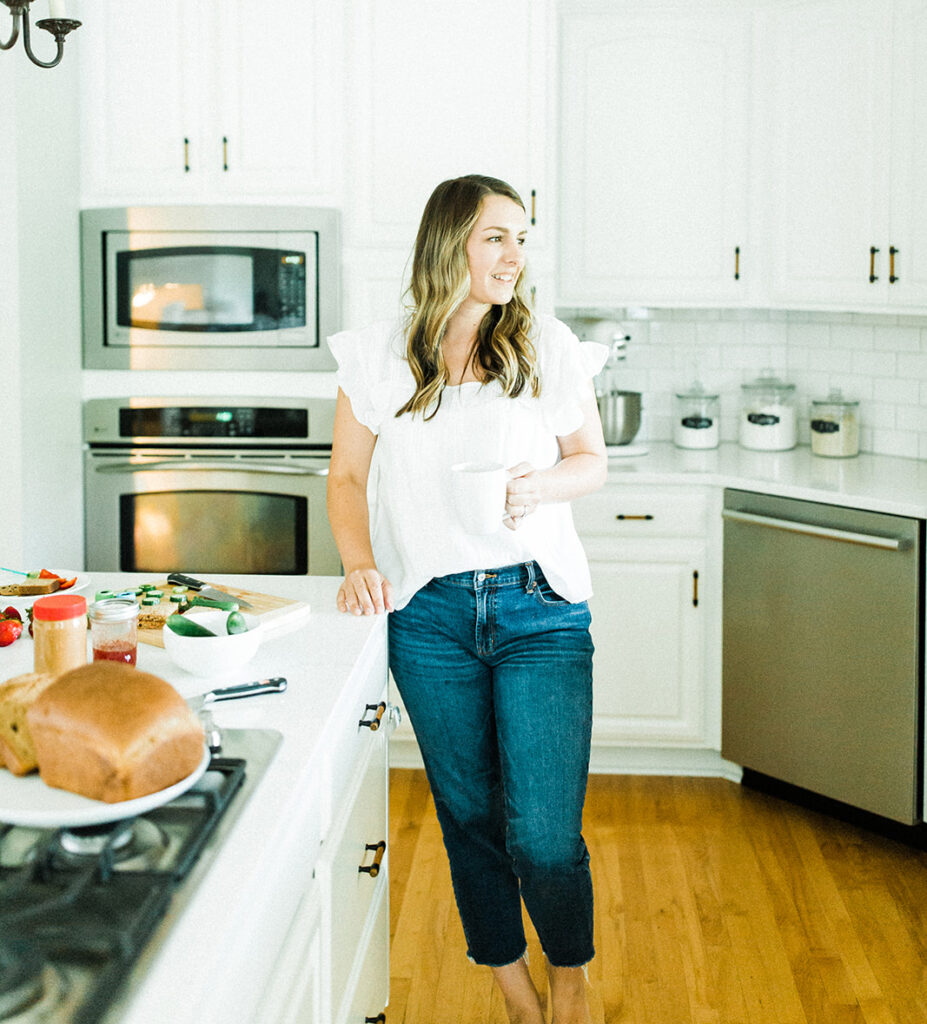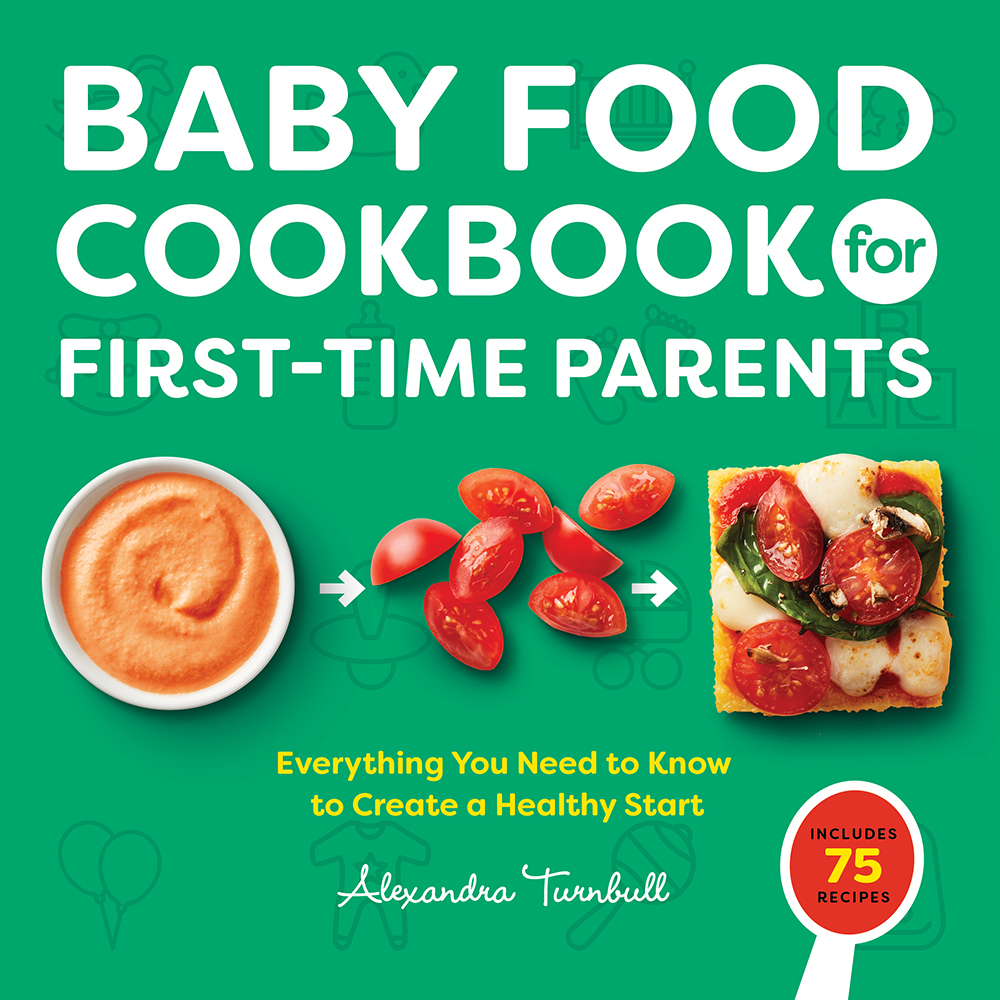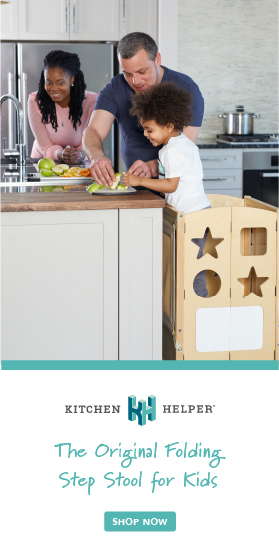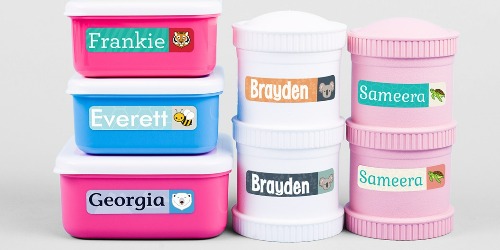As a parent, we worry about a million things every day – one of which is poop. Is your child pooping enough? Are they pooping too frequently? Should it look like that? Smell like that? Why haven’t they pooped today – wait? When’s the last time they pooped?
While every child’s poops will be different, we certainly do want to avoid dreaded constipation. This is no fun for you or your child. It can be frustrating, concerning, and downright painful. This blog post will help you determine if your child is constipated, as well as how to avoid or combat it if it’s already here.
Table of Contents
How do you know if your picky eater is constipated?
Adults normally poop once a day, but how much should your child poop? Children poop every 1-2 days, but if your child is a picky eater, they can be more prone to constipation. Your child is likely constipated if they have firm poop and only have a bowel movement every 3-4 days.
“Normal” poop has several physical attributes that can help you identify if your child is in the clear of constipation.
- Brown in color: Don’t be alarmed if all of a sudden it’s green or dark blue. What your child eats, like dark green veggies, blueberries or beets may change the color of their poop. if your child’s poop ever contains red (blood), black or white, please contact their pediatrician.
- Soft: Not too soft, not too hard, but somewhere in the middle – think a ripe banana.
- Painless: pooping should not hurt. Once a child is constipated this can make it harder to poop. If your child all of a sudden is afraid of pooping, it’s possible that it’s because it doesn’t feel good due to how hard their poop is.
- Consistent: No one’s poop is exactly the same, but it should be consistent from poop to poop for your child. If you notice a drastic difference with color, smell, shape or frequency, stop and think what might be causing these changes. As always, speak with their pediatrician if you have concerns.
Use the chart below to help visually determine if your child is constipated.

Why is your picky eater constipated?
There are many reasons why your child may be constipated.
- Change in diet
- Potty training
- Not eating enough fiber
- Not drinking enough water
- Inactivity
- Diet heavy in dairy products
- Stress
So how do you get kids to poop if they are constipated or not pooping “normally?” Three areas to focus on to help your child avoid constipation or to help get things moving along are fiber (fruits, vegetables, whole grains, nuts, beans, and legumes) hydration, and physical activity. As always, speak with your child’s pediatrician if you have concerns about their health. Get your kids involved and excited about pooping, fruits, and vegetables by reading about pooping, fruits and vegetables!
How much fiber does my picky eater need?
The American Academy of Pediatrics recommends an “Eat 5 add 5” approach. Take your child’s age and add five to determine a rough estimate of how many grams of fiber they should have per day. If they’re constipated, they could have a bit more.
Example: A five-year-old should have 10 grams of fiber per day. 5 years old + 5 = 10 grams of fiber
Fruit

Fruit is full of fiber, especially with the skin on! Fruit doesn’t have to be fresh to have nutritional benefits. Dried fruit is another simple way to get fiber in too. When looking for dried fruit, find ones without added sugar in them if possible, but know that it’s not the end of the world if they get some added sugar from dried fruit that also contains valuable vitamins, minerals and fiber. Fruit can be enjoyed, fresh, dried, freeze-dried, frozen, canned or even cooked. While all fruits are great, the “P” fruits pack an extra fiber punch! These fruits are peaches, pears, plums, pineapple, papaya, and of course prunes!
- Orange, 1/2 an orange, 2 grams fiber
- Dried pineapple, 1 oz, 2 grams fiber
- Pear, 2 oz, 1.9 grams fiber
- Craisins, 1 oz, 1.5 grams fiber
- Prunes, 2 each, 1.4 grams fiber
- Apple, 2 oz, 1.4 grams fiber
- One Dino bar, 2 grams fiber. Use code familynutritionist10 for 10% off.
Try this: frozen fruit can be a new way to offer your kiddo fruit! Tropical blends tend to have pineapple and papayas. Plus frozen fruit lasts longer, may be more affordable and is great to add to smoothies.
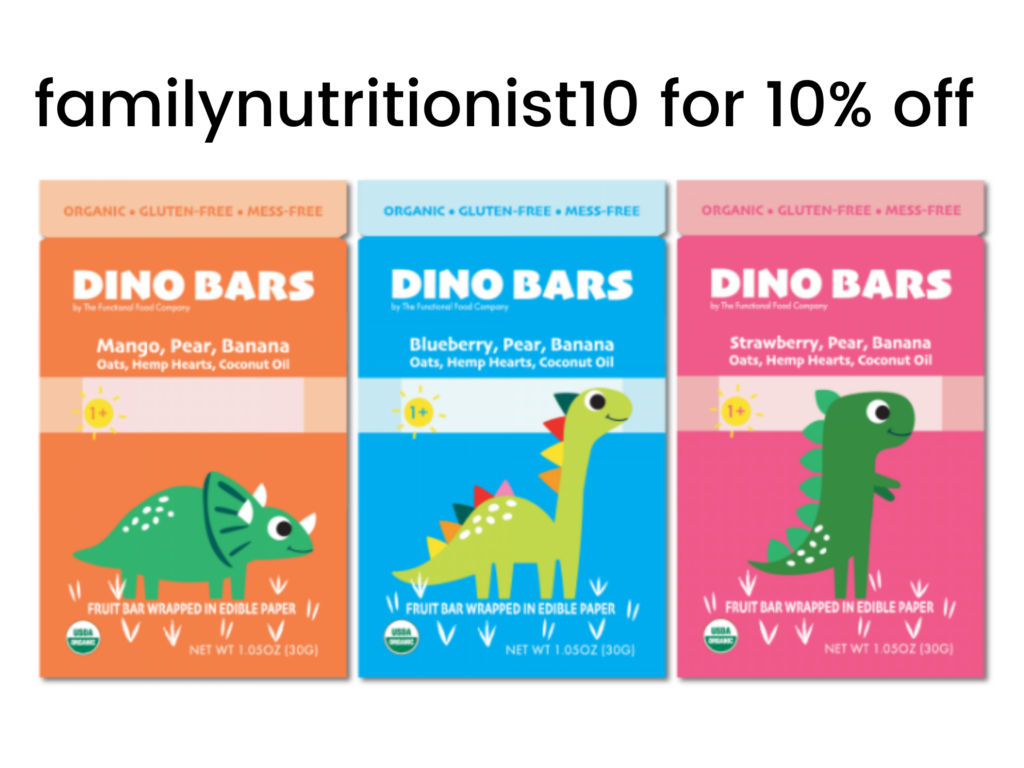
Veggies

Vegetables tend to be the least liked food group for children, but they’re loaded with fiber- an important nutrient necessary to help keep them regular. Just like fruit, they can be eaten in a variety of ways, not just raw. Always be mindful of choking hazards and avoid hard, round raw vegetables like baby carrots for children under four. Read more here on choking hazards.
If you find that your child won’t even try a vegetable, let alone look at one, sign up for my FREE five week picky eater TRY IT Challenge, plus get my 20 + page picky eater guide.

- Kale, cooked, 2 oz, 2.3 grams fiber
- Green beans, cooked, 2 oz, 1.8 grams fiber
- Butternut Squash, cooked, 2 oz, 1.8 grams fiber
- Carrots, raw, 2 oz, 1.6 grams fiber
- Broccoli, raw, 2 oz, 1.5 grams fiber
- Brussel sprouts, cooked, 2 oz, 1.5 grams fiber
Try this: Spinach and pineapple smoothie! Smoothies are a great way to get kids to help in the kitchen. Plus all the fiber is still there and it is packed with nutrients that’s easy to slurp down!
Pineapple Spinach Smoothie
Equipment
- 1 Blender
Ingredients
- 1 Cups Frozen Pineapple
- 1 Banana
- 1/2 Cup Plain or Vanilla Greek Yoghurt
- 1 Cup Fresh Spinach
- 1/4 Cup Milk of choice
- 1 Tbsp Tiny Sprouts Chia Seeds
Instructions
- Place all ingredients in the blender. Adding milk and yoghurt last.
- Blend on high until smooth
- Transfer to glass/tumbler and add a straw for child to enjoy!
Whole grains

Foods like whole-wheat bread, brown rice, quinoa, and popcorn are full of fiber. While popcorn is a great movie night snack and certainly full of fiber, it’s also a choking hazard for children under four. Kiddos tend to love carbohydrate-rich foods like crackers, pasta and bread, so swap some for whole grain options to help them poop!
- Whole wheat tortilla, 8″, 3 grams
- Farro, 1/4 cup, 1.6 grams fiber
- Oatmeal, 1/4 cup, 1.4 grams fiber
- Whole wheat pasta, 1/4 cup, 1.4 grams fiber
Try this: add a simple recipe swap – instead of white rice, try a steamer quinoa blend, like Seeds of Change Quinoa & Brown Rice with Garlic steamers. These are easy to use if you’re not familiar with cooking a variety of whole grains.
Beans and Legumes

While they may not be the most popular with your child, beans are one of the best fiber-packed foods to help your picky eater poop, plus a good source of protein and iron! If your picky eater isn’t fond of beans, peas or other legumes quite yet, try putting one on their plate to start with, offer family style and let them scoop themselves and if they still don’t want any, have them scoop beans onto your plate for progress with exposure.
- Soybeans/edamame, 2 oz, 2.9 grams fiber
- Navy beans, 2 tablespoons, 2.4 grams fiber
- Black beans, 2 tablespoons, 2.3 grams fiber
- Pinto beans, 2 tablespoons, 1.9 grams fiber
Try this: add smashed beans to quesadillas and have them help you smash it! The more they are involved in the process, the more likely they will be to try it! Again, avoid hiding it as this will just break your child’s trust if they find out you were trying to sneak it in without them noticing.
Nuts & Seeds
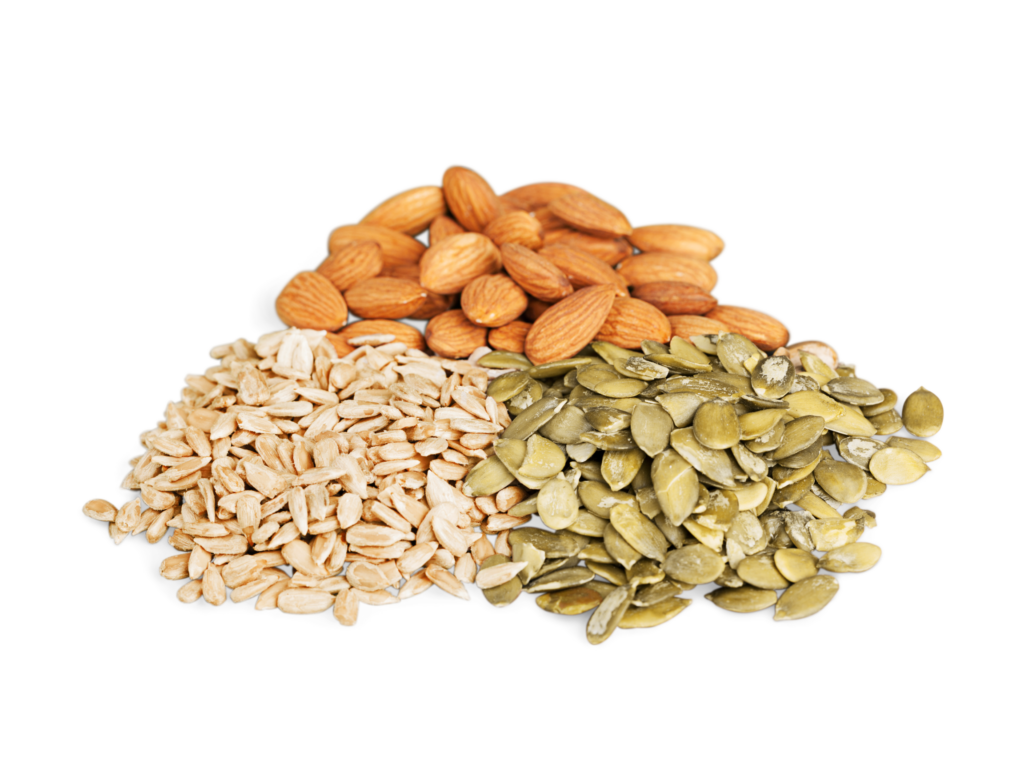
Allergies permitting, nuts and seeds can be added to meals or used as a quick snack! Nut butters are another great option! One tablespoon of creamy peanut butter has 1 gram of fiber in it, one tablespoon of crunchy peanut butter has 1.3 grams of fiber, and one tablespoon of almond butter has 1.6 grams of fiber-packed in it! Make note that whole nuts and seeds, as well as thick spreads of nut and seed butters can be choking hazards for children under four. Instead, offer chopped our ground nuts and seeds and thin layers of nut and seed butters.
Seeds are also a great option that can easily be sprinkled onto or into nearly anything. Plus, your kids will likely love doing the sprinkling themselves. In order to maximize the nutritional value of seeds and minimize choking risk, use the ground versions, otherwise they may just go right through them and all that hard work of getting your picky eater to finally eat something other than fruit snacks and cookies goes to waste. Tiny Sprouts has great options for superseed boosters that come milled and easy for you and your little one to digest. Use code ALEX10 for 10% off your first order.
- Tiny Sprouts Digestive Booster, 2 Tbsp, 3 grams fiber
- Tiny Sprouts Milled Flaxseeds, 2 Tbsp, 3 grams fiber
- Tiny Sprouts Milled Chia Seeds, 2 Tbsp, 3 grams fiber
- Almonds, 1 tablespoon, 1 gram fiber
- Peanuts, 1 tablespoon, 1 gram grams fiber
- Peanut butter, 1 tablespoon, 0.8 grams fiber
- Hazelnuts, 1 tablespoon, 0.8 grams fiber
Try this: energy bites are a great way to get your child involved in a fun snack that is fiber-packed and are easy to make in bulk and throw in the freezer to pull out as needed!

Beverages
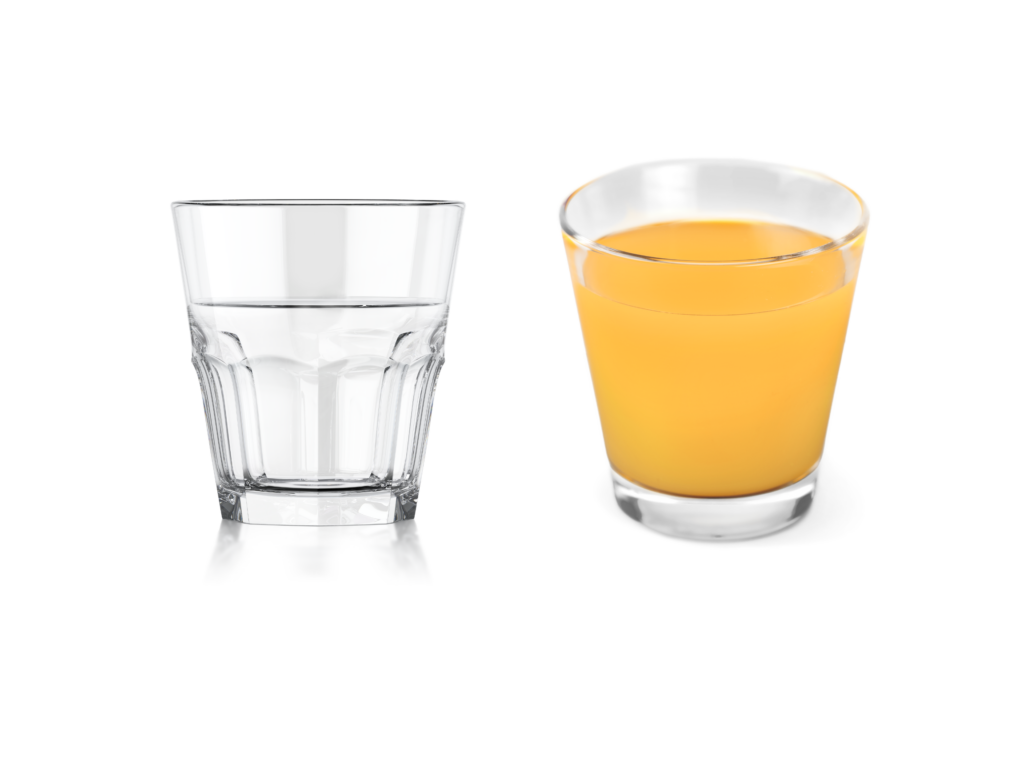
Hydration can be a HUGE factor when trying to get your picky eater to poop. Offer water with each meal and if they request more juice or milk that is offered with a meal, make water be the option once their portion of juice or milk is gone. Juice can also be helpful. While prune juice is certainly the go-to juice for constipation, your picky eater may not be excited to drink it. Instead, you can try pear juice to help get things moving.
The American Academy of Pediatrics recommends: “To stay well hydrated, children ages 1-3 years need approximately 4 cups of beverages per day, including water or milk. This increases for older kids to around 5 cups for 4-8-year-olds, and 7-8 cups for older children.”
Another way to improve hydration in your kiddo is to eat it! Yes, some foods count as liquids or have high water content, think watermelon and cucumber. Foods that are considered liquids include frozen liquids like ice cream and popsicles. Jello is also considered a liquid as it is liquid at room temperature!
Foods with high water content:
- Watermelon
- Strawberries
- Cantaloupe
- Peaches
- Oranges
- Cucumber
Try this: Have your child pick out a new water bottle, let them fill it up themselves or if they aren’t into plain water, you can even try flavored water like the Hint flavored water boxes.
Foods to Avoid for Constipation
f your child is constipated, or experiences constipation frequently, there are a few foods you may want to limit or avoid. These foods are typically constipating because they lack fiber and don’t help move things along.
If some of the foods listed below tend to be your child’s favorite, you don’t need to completely eliminate them. Instead, try to minimize these foods and increase the high-fiber foods discussed throughout this post.
- Processed grains such as white bread, white rice, and white pasta because they lack fiber
- Dairy products such as milk, cheese, and yogurt because they lack fiber and also potential sensitivities to milk protein
- Red meat due to its lack of fiber and high-fat content is harder for your body to digest
- Fried or fast food because they tend to be high in fat and low in fiber
What if changing their diet doesn’t help?
Maybe you feel like you’ve tried all these foods and beverages, but your child is still experiencing frequent constipation.
As a dietitian and mom, I will always promote using food first to aim for good health outcomes, however, as I said, I’m a mom, so I understand the reality that things are always easier said than done.
Sometimes you may need to reach to something other than a food or beverage to help. I recommend a liquid fiber product like HyFiber for kids.
- 6 grams of liquid fiber per serving
- Not a laxative, but instead helps flush the gut and promotes bowel regularity through softer stools.
- Contains natural prebiotics to help improve gut health
- Safe alternative to Miralax and does not cause dependency.
Always consult with your child’s pediatrician before giving to your child.

Power Poop Pairs for your picky eater
You might already be thinking of meals or snacks you already make that include these foods, but here are some ideas if you have no idea how to incorporate these foods into your child’s diet.
Snacks
- Veggies with hummus
- Apple slices with nut butter
- Berries with granola bar
- Celery with nut butter and raisins
- Freeze-dried fruit and cheerios
- Edemame with whole grain crackers
- Popcorn
- Dino bar
Meals
- PB&J on whole grain bread
- Whole grain toast with nut butter
- Whole wheat pasta with marinara
- Bean quesadillas
- Avocado toast with eggs
Regardless if your child is experiencing constipation, you should always strive for incorporating as much variety as you can into their diet. Make small changes to the foods they already enjoy and learn how to help your child try new foods without a fight and eat more variety by signing up for my FREE picky eater TRY IT Challenge.

